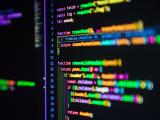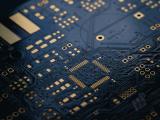

Recent
2023 Automation Review: Top 3
The year of 2023 I think may have had some of the biggest leaps in the Network Automation capabilities that are being delivered by some of the best in the business. With Nautobot’s Golden Config App adding the ability to complete configuration remediation and Ansible release Event Driven Ansible, there are a couple of powerful tools to help you with your Network Automation. And all with a great new conference addition specific to Network Automation.
Slack Power Keyboard
Recently Slack started introducing a new UI that is bringing back the importance of knowing keyboard shortcuts. Keyboard shortcuts within Slack are immensely helpful in my day to day, and it is essential for me being able to keep up with what is going on within my organization and some of the other 20 Slack organizations that I have joined. So much so, I don’t believe that once I am in the Slack UI on my machines, I am ever touching the mouse to get from one place to another. About the only time I may need to use the mouse is to scroll back in the thread, so I’m not even clicking when using the mouse.
Nautobot: How I Use Tags For VMs
In my home environment I am leveraging Nautobot as my source of truth. This is for the network, which is probably not all that interesting in my home environment, and my virtual machines. Why am I tracking my virtual machines in Nautobot? Simple, to help automate them. I think that this is a clever methodology to help use tags and to get automation working within the environment. This same type of thing may be applicable to your network environment as well.
Designing WAN Availability
One of my hot topics in my past that I haven’t seen written about often is the calculation of WAN availability and what the design is built for. There is often the number of 9’s whether that is 5 9s or 3 9s or otherwise, where do you start? Well, in the past the post by EventHelix.com outlines system reliability. It talks about designing systems in parallel and in serial. What does that mean. Well, I am going to take the system availability and bring it into the Wide Area Network, which really could be brought to any environment that has a system uptime requirement as a way to calculate and validate the dollars that you are requesting. I am hoping that this will help you to be able to answer questions such as “What if we added another service provider?” or “What if we changed out hardware for a smaller/larger hardware choice?”.
DevNet Expert Workstation On Debian
As part of my journey of using my Debian based Dev Workstation, as well as my studies towards completion of the DevNet Expert, I wanted to get up and running with the DevNet Workstation example that would help to become familiar with the environment that would be found at the live exam. There were a few small quirks along the way, so I thought I would go ahead and create a post about how to get started.
Debian Finger Print Login
As a long time MacBook user and of recent years on the M1 using the TouchID system that allows for fingerprint authentication, this is something that I wanted to get to work pretty quickly for myself. I had tried a couple of different options to get fingerprint reading to work. Through the 3 methods, I finally have one that works, and I figured it would be worth the share.
Attempted Routes #
Now some of these may seem foolish as I write after the fact. But I had some reason to think that there would be success. The three options that I tried (only the last/third one worked):
Nautobot Environment File
Within Nautobot there are many ways to be able to get the Nautobot environment running. Environment variables are used quite a bit in the Docker environment following best practice principles set forth in the 12 Factor App. The use of environment variables is helpful for working through the various stages of an application to production. The installation instructions leverage a single environment variable NAUTOBOT_ROOT and that is set in the SystemD files shown below:
Upgrade Nautobot Python Version in Virtual Machine
One observation lately is that Python is moving along quickly with new versions and new EOLs. Along with needing to make these updates, the applications that Python uses will also need to be moving along. Nautobot is my favorite, and in my opinion the best SOT platform available in the open source ecosystem today. So let’s dive into the updating of the Python version.
For this post, I’ve created a new Rocky 8 Virtual Machine to be the host. See the note below for the reasoning. This will start off with a Nautobot install from the Nautobot docs. I won’t dive into all of that, assume that is the starting point with a fresh Nautobot application.
Using Google Earth for Golf
I’m going to diverge a small bit from the straight network automation space that I have blogged about primarily and dive a small bit into the world of using Google Earth to help prepare for your golf game. Upcoming, I’m playing in a Minnesota Golf event at two courses in late August. I’m going to put together a green book for myself and figure this would be a great topic to touch on how I’m going about this activity.
Workstation Troubleshooting 2023
In my previous post I wrote about a workstation that I was working on building. It took an incredibly long time to get up and into a stable environment. But I have finally accomplished stability (hoping to not jinx it here with the post). I went through a fair bit of troubleshooting to get to this point.
Symptom #
The symptom that was having instability was that the system would freeze randomly. There was not a particular application or otherwise that would be point me to an application that was causing the failures. The system would just freeze overnight or at the start of getting into the desktop UI.









